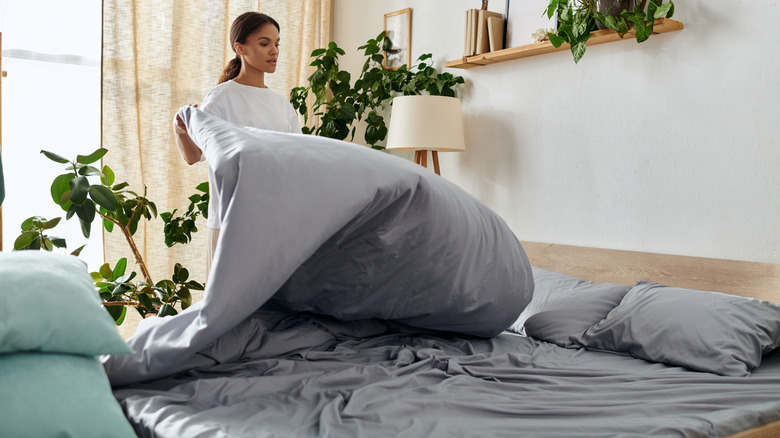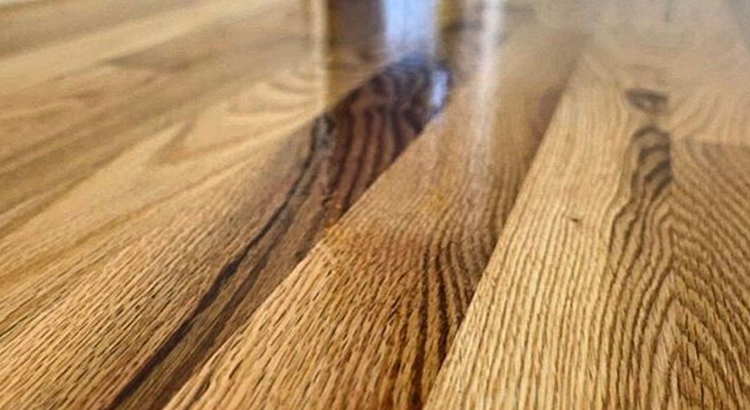
Rethinking Clean: The Surprising Science of a Healthier Home Environment
The Surprising Science of a Healthier Home Environment
For generations, the image of a perfectly clean home has been synonymous with a tightly made bed, gleaming surfaces, and the faint scent of lemon polish. This vision, deeply ingrained in our culture, often drives our cleaning routines. We scrub, we tidy, and we organize, believing that visual order equates to a healthy living space. However, emerging insights from environmental science and microbiology are challenging these long-held beliefs. The latest Lifestyle News suggests that true home hygiene goes far beyond what the eye can see, delving into the microscopic ecosystem that we share our homes with. It’s a world of humidity, airflow, and temperature, where the most impactful Cleaning Tips are not about vigorous scrubbing but about intelligent environmental control.
This article explores a new paradigm for home cleanliness—one rooted in science, not just tradition. We will uncover how simple, counterintuitive shifts in our daily habits, such as how we treat our beds in the morning, can have a profound impact on our overall Health & Wellness. By understanding the invisible forces at play, we can move from a reactive cleaning model to a proactive one, creating an environment that actively discourages allergens, mold, and other unwanted microscopic guests. This approach is not just about a cleaner home; it’s about fostering better Sleep Health, reducing allergic reactions, and enhancing our quality of life through smarter, more effective home care strategies.
Section 1: The Science of a Healthy Home: Beyond Surface Cleanliness
The foundation of a truly healthy home lies in understanding that it is a living, breathing ecosystem. While we focus on visible dirt and clutter, the real battle for a healthy environment is often fought on a microscopic level against allergens, bacteria, and mold. Mastering this requires shifting our focus from aesthetics to the fundamental environmental factors that govern microbial life: humidity, temperature, and ventilation. This proactive approach to Home Improvement is less about constant cleaning and more about creating an inhospitable environment for common household pests and allergens.
The Microscopic Ecosystem In Your Home
Every home is teeming with a complex community of microorganisms. Dust mites, mold spores, bacteria, and viruses are all-natural inhabitants of our indoor spaces. While many are harmless, others can trigger allergies, asthma, and other respiratory issues. Dust mites, in particular, are a primary source of indoor allergens. These tiny arachnids thrive in our carpets, upholstery, and, most notably, our beds. They feed on the dead skin cells we shed daily, and it is their waste products, not the mites themselves, that cause allergic reactions in sensitive individuals. Effective Home Organization and decluttering can reduce their habitats, but controlling the environment is the most critical step. This focus on creating a healthy living space is a cornerstone of modern Holistic Health and is particularly important for families looking for sound Parenting Tips to protect their children’s well-being.
Key Environmental Factors: Humidity, Temperature, and Airflow
Microscopic organisms don’t thrive by chance; they require specific conditions. By manipulating these conditions, we can gain the upper hand.
- Humidity: This is the most critical factor. Dust mites and mold need moisture to survive and reproduce. Mites absorb water from the air, and mold spores require a damp surface to grow. Keeping indoor humidity below 50% creates a desert-like environment for these pests, drastically reducing their populations. This principle of Sustainable Living encourages using natural ventilation over energy-intensive air conditioning.
- Temperature: Most microbes prefer the same comfortable temperatures we do, typically between 68-77°F (20-25°C). While we can’t live in a refrigerator, being mindful of thermostat settings can contribute to a less hospitable environment.
- Airflow: Stagnant air allows humidity and allergens to concentrate. Good ventilation, whether from an open window or a mechanical system, disperses moisture, dilutes pollutants, and creates a less stable environment for pests. This simple act of promoting airflow is one of the most effective and Eco-Friendly Living strategies for a healthier home.
Understanding these principles is the first step toward transforming your home from a passive container into an active participant in your family’s health and wellness journey.
Section 2: Detailed Analysis: The Unmade Bed and the Microscopic Battleground
Perhaps no daily habit illustrates the conflict between traditional tidiness and scientific hygiene better than the act of making the bed. For many, a neatly made bed is a non-negotiable start to the day—a small victory of order over chaos that contributes to positive Mental Health and productivity. However, scientific research offers a compelling reason to reconsider this morning ritual. The simple choice of leaving your bed unmade for a period after you wake up can be one of the most effective strategies in the fight against dust mites, directly impacting your Sleep Health.
The Dust Mite Dilemma
Your bed is the primary habitat for house dust mites in your home. It provides the three things they need to flourish: food (an abundance of dead skin cells), warmth (from your body heat), and moisture (from your sweat and respiration). An average adult can shed up to 1.5 grams of skin a day, enough to feed a million dust mites. During the night, as you sleep, you create a warm, humid microclimate within your bedding. This environment is a five-star resort for dust mites, allowing them to feed, hydrate, and reproduce in staggering numbers. For those with allergies or asthma, this can lead to a nightly exposure to potent allergens, resulting in symptoms like sneezing, itchy eyes, and respiratory distress. This is also a key consideration for Pet Care, as dander from cats and dogs can add to the food supply for mites.
How Making Your Bed Creates a Mite Paradise
When you wake up and immediately pull the duvet up, tuck in the sheets, and arrange the pillows, you are doing the dust mites a huge favor. This action traps all the heat and moisture that accumulated overnight, sealing it in and maintaining that ideal, humid environment for hours. The dark, warm, and damp conditions under the covers become a perfect incubator, protecting the mite population from the drier, cooler air of the room. A 2005 study published in the *Building Services Engineering Research & Technology Journal* modeled this exact scenario, finding that the hygrothermal (heat and moisture) conditions in a freshly made bed are significantly more favorable for mite survival than in one left open to the air.
The Scientific Case for a Messy Bed
The solution, according to the science, is to do the opposite. By leaving your bed unmade—pulling the covers back completely to expose the sheets and mattress to air and light—you radically change the environmental conditions. The moisture from your sleep evaporates into the room’s atmosphere, and the mite population becomes exposed to a much drier environment. Since dust mites require a certain level of ambient humidity to survive, this rapid dehydration is lethal to many of them. This simple change in routine, a core tenet of new-age Cleaning Tips, disrupts their life cycle and significantly reduces the overall allergen load in your primary breathing zone. It’s a perfect example of how a small act of Self-Improvement, by challenging a deeply ingrained habit, can lead to tangible health benefits.
Section 3: Extending the Principle: Environmental Hygiene for Your Whole Home
The “unmade bed” principle is not an isolated trick; it’s a powerful demonstration of a broader concept that can be applied throughout your home. By shifting your focus from reactive cleaning to proactive environmental management, you can create a healthier living space from the bathroom to the kitchen. This approach integrates seamlessly with modern Interior Design philosophies that prioritize functionality and well-being, and it often involves simple DIY Projects and habit changes rather than expensive renovations. It’s about creating a home that is inherently resistant to the pests and microbes that can impact your family’s health.
The Bathroom: Combating Mold and Mildew
The bathroom is the home’s humidity hotspot, making it a prime breeding ground for mold and mildew. Just as trapping moisture in a bed helps mites, trapping steam in a bathroom helps mold. The solution is aggressive ventilation.
- Best Practice: Run your exhaust fan during every shower and for at least 20-30 minutes afterward to vent moist air outside. If you don’t have a fan, opening a window is essential.
- Actionable Tip: Use a squeegee on shower walls and doors after each use. This removes the bulk of the water that mold needs to grow, drastically reducing the need for harsh chemical cleaners. This is a great tip for Natural Cleaning enthusiasts.
- Home Improvement: Consider upgrading to a more powerful, quieter fan with a humidity sensor, a smart piece of Technology for Home that automates this process for you.
The Kitchen: Managing Foodborne Pathogens and Pests

The kitchen presents a different set of challenges, from bacteria on surfaces to pests attracted by food and water. Environmental control here is about managing moisture and food sources.
- Best Practice: Use your range hood fan every time you cook, not just when something is smoking. It removes airborne grease particles (pest food) and cooking-related moisture.
- Actionable Tip: Swap your cellulose sponge for a silicone scrubber. Sponges are notorious bacterial breeding grounds. If you must use one, microwave it while damp for one minute daily to sanitize it. This small change in your Food & Cooking routine can have a big impact.
- Zero Waste Principle: Proper food storage in airtight containers not only supports Meal Planning and reduces waste but also denies pests like ants and cockroaches a food source.
Living Areas: Air Quality and Allergen Reduction
In living rooms and bedrooms, the focus shifts to airborne allergens like dust, dander, and pollen.
- Best Practice: Invest in a vacuum with a sealed system and a HEPA filter. This ensures that allergens are captured and not just recirculated back into the air.
- Actionable Tip: Dust with a damp microfiber cloth instead of a dry feather duster. The damp cloth traps dust, while a dry one simply launches it into the air to settle elsewhere. This is a key part of effective Home Organization.
- Green Living: Incorporate houseplants into your Home Decor. Plants like Snake Plants and Spider Plants are excellent at filtering indoor air pollutants. However, be mindful of Plant Care; overwatering can lead to mold growth in the soil, so proper drainage is key for this form of Urban Gardening.
Section 4: A Modern Framework for Home Hygiene: Best Practices
Adopting a science-based approach to home hygiene doesn’t mean abandoning cleaning altogether. It means working smarter, not harder, by prioritizing actions that have the greatest impact on your home’s microscopic environment. This modern framework combines strategic cleaning with environmental control, leading to a healthier home and, often, more free time—a significant boost for anyone striving for better Work-Life Balance. It’s about creating a system that supports your well-being with minimal, targeted effort.
Prioritize Ventilation and Dehumidification
The single most powerful tool in your arsenal is control over your home’s air. Make it a daily habit to open windows for at least 15 minutes, even in colder weather, to flush out stale, humid air and accumulated pollutants. In persistently damp areas like basements or bathrooms, a dehumidifier is a wise investment. This focus on air exchange is a cornerstone of Sustainable Living, as it can reduce the load on HVAC systems and improve health without chemicals. For those interested in Personal Finance, maintaining optimal humidity can also prevent costly mold remediation and protect the structural integrity of your home.

Clean Smarter, Not Harder
Instead of a “whole house” cleaning marathon, focus your energy on high-impact zones.
- Bedding: Wash sheets and pillowcases weekly in hot water (at least 130°F/54°C) to kill mites and remove allergens.
- Floors: Vacuum high-traffic areas twice a week with a HEPA-filtered vacuum, and focus on deep cleaning carpets less frequently.
- Surfaces: Use microfiber cloths that trap dust and bacteria effectively with just water, reducing the need for chemical sprays.
Embrace a “Less is More” Mentality
The principles of Minimalism and Decluttering have profound implications for home hygiene. Every object in your home is a surface where dust can collect. By reducing clutter, you eliminate habitats for dust mites and make cleaning faster and more effective. This approach not only simplifies your Organization Tips but also contributes to improved Mental Health and Stress Management, as a clean, open space is inherently more calming and easier to maintain. A clutter-free environment is a healthier environment, both physically and psychologically.
Conclusion: The Dawn of the Intelligent Clean
The journey to a healthier home begins with a fundamental shift in perspective. True cleanliness is not merely the absence of visible dirt but the cultivation of an indoor environment that actively promotes well-being. The simple, science-backed example of leaving a bed unmade to combat dust mites serves as a powerful metaphor for this new approach: our most effective actions are often those that work with nature, not against it. By prioritizing environmental factors like humidity, ventilation, and temperature, we can disrupt the life cycles of common allergens and microbes at their source.
This intelligent approach to home hygiene empowers us to create spaces that are not just clean on the surface but are fundamentally healthier to live in. It encourages us to question old habits, embrace simple but impactful changes, and use our knowledge to foster a sanctuary of health for ourselves and our families. Ultimately, the cleanest home is the one that is managed with wisdom, foresight, and a deep understanding of the delicate ecosystem we inhabit every day. This is the future of Health & Wellness at home.
You may also like
Archives
- October 2025
- September 2025
- August 2025
- October 2023
- September 2023
- August 2023
- July 2023
- June 2023
- May 2023
- April 2023
- March 2023
- February 2023
- January 2023
- December 2022
- November 2022
- October 2022
- September 2022
- August 2022
- June 2022
- May 2022
- April 2022
- March 2022
- January 2022
- December 2021
- November 2021
- October 2021
- August 2021
- November 2020
- July 2020
- May 2020
- April 2020
- March 2020
- August 2018
- July 2018
- June 2018
- April 2018
- March 2018
Categories
- Age Groups
- AI/ML
- Alternative Medicine
- Animal Health
- Animal Husbandry
- Animals
- Anti-Aging
- Architectural Design
- Augmented Reality
- Automation
- Babies
- Baby
- Biohacking
- Book Reviews
- Breastfeeding
- Budgeting
- Business
- Career Advice
- Career Development
- Career Growth
- Cats
- Chess
- Circular Economy
- Cleaning Tips
- Cloud Computing
- Cognitive Performance
- Cognitive Science
- Community
- Community Building
- Community Engagement
- Computer Vision
- Content Analysis
- Content Strategy
- Cultural Events
- Cycling
- Data Engineering
- Data Science
- Design Psychology
- Developer Productivity
- Diet
- Diet
- Digital Identity
- Digital Media
- Digital Wellbeing
- Dogs
- Entertainment News
- Environmental Impact
- Environmental Science
- Equity Compensation
- Exercise
- Exotic Pets
- Fall Gardening
- Family
- Family Health
- Family Life
- Fashion Tech
- Financial Analysis
- Financial Planning
- Flooring Maintenance
- Food
- Food Psychology
- Food Tech
- Garden Maintenance
- Gardening Tips
- Greece
- Greek
- Greek Food
- Hardware Engineering
- Health
- Health And Wellness
- Health Tech
- Healthy Eating
- Healthy Recipes
- Holistic Health
- Home & Living
- Home Decor
- Home Financing
- Home Health
- Home Improvement
- Home Organization
- Industry Analysis
- Ingredient Deep Dive
- Integrative Medicine
- Interior Design
- Internet of Things
- Investment Strategy
- IoT
- Kids
- Leadership Development
- Learning Strategies
- Lifestyle
- Lifestyle News
- Literature
- Material Science
- Materials Science
- Meal Planning
- Media Analysis
- Mental Health
- Mental Performance
- Miami
- Miami Food
- Mind And Body
- Minimalism
- Mobile Development
- Neuroscience
- Nutrition
- Operating Systems
- Opinion
- Organization Tips
- Outdoor Living
- Over 40
- Over 50
- Over 60
- Parenting
- Parenting Strategies
- Performance
- Personal Development
- Personal Finance
- Personal Productivity
- Pet Care
- Pet Safety
- Philosophy
- Politics
- Productivity
- Protein
- Psychology
- Real Estate Investment
- Recipes
- Renovation Planning
- Responsible Pet Ownership
- Robotics
- Science
- Seafood
- Security
- Self-Care
- Skincare Science
- Sleep
- Smoothies
- Social Impact
- Soft Skills
- Soil Health
- Spatial Computing
- Spatial Design
- Stress Management
- Supplements
- Sustainability
- Sustainable Fashion
- Tax Strategy
- Travel
- Uncategorized
- Urban Planning
- Veggie
- Virtual Events
- Volunteering
- Wealth Management
- Wearable Technology
- Wellness
- Wellness Technology
- Work-Life Balance
- Workplace Culture
- World
- Writing Skills
- Zero Waste



Leave a Reply